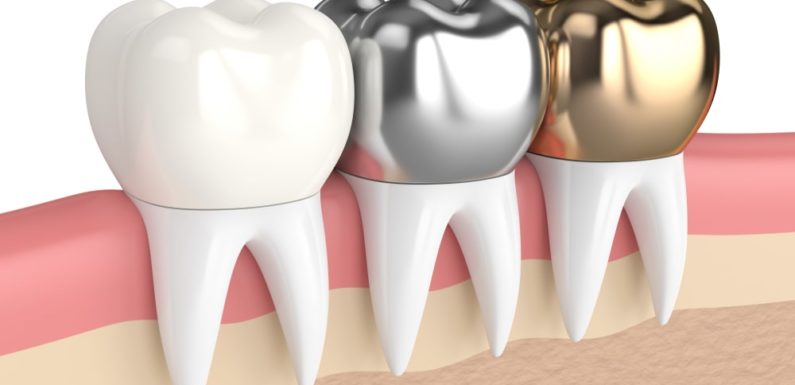
A dental crown is a tooth-shaped “cap” that covers the entire visible portion of your teeth to restore its shape and size, strength, and improve its appearance. The cementing process fully encases it in order for you to feel confident with how they look.
Scenarios Where Dental Crowns are Ideal
Dental crowns may be recommended in the following scenarios:
- Protect a weak tooth (for example, from decay) from breaking
- To hold together parts of a cracked tooth.
- Restore an already broken tooth or a tooth that has been worn down severely.
- To cover and support a tooth with a large filling when there is not enough of the tooth left.
- To hold a dental bridge in place.
- To cover severely discolored or misshapen teeth.
- To cover a dental implant.
- To make a cosmetic modification.
When used in children, a crown is used on baby (primary) teeth to:
- Save a tooth that has been severely damaged and can no longer support a filling.
- Protect teeth that’s at risk for tooth decay. This is especially ideal when the child finds it hard to follow a good oral routine.
- Decrease the frequency of general anesthesia for those who are unable to fully cooperate because of behavior, age, or medical history.
Different Types of Dental Crowns
Permanent crowns can be made from all metal (gold or another alloy), stainless steel, all resin, all ceramic, and porcelain-fused-to-metal.
Stainless Steel
With the rise of dental costs and a lack of insurance, many people are looking for affordable solutions to keep their teeth healthy. One such solution is temporary stainless steel crowns that protect the tooth from further decay at an accessible cost point without sacrificing quality or even aesthetics.
A child’s teeth come in two phases. The first phase is when the primary tooth comes out to make room for its permanent replacement. When this happens, most of these babies will have a stainless steel crown placed that covers what was once their baby tooth and protects it from decay or potential damage until they are ready for adult dental care.
Metals
Metals used in crowns vary, but gold and platinum are the most common. Gold-plated metal crowns withstand chewing forces well; their only drawback is high cost. Platinum has a similar resistance to wear down as mercury fillings (although not quite so much) which makes it great for molars that can’t be seen easily or when you’re on a budget because its price tag isn’t too hefty either.
Porcelain-Fused-to-Metal
Porcelain-fused-to metal dental crowns are the best choice for patients who want to have a custom color match done with their adjacent teeth. However, these dental crowns can wear on the opposing teeth more than resin or metallic dentures.
They also tend not be able to hold up against all ceramic tooth replacements because of porcelain’s tendency to chip off and break in pieces. Porcelain fused metal is still one of your top choices if you’re looking for that perfect look next time around.
All-Resin
All-resin dental crowns are cheaper and more durable than other types of dental crowns. All-resin teeth require a little less time to make, but they will last longer because the resin does not wear down as quickly with everyday use like porcelain fused metal can do over time.
All Ceramic or All-Porcelain
All-ceramic or all-porcelain dental crowns provide better natural color match than any other type of tooth, making them a perfect solution for people with metal allergies. All-ceramics can be used on both the front and back teeth so you get an even more accurate looking smile.

